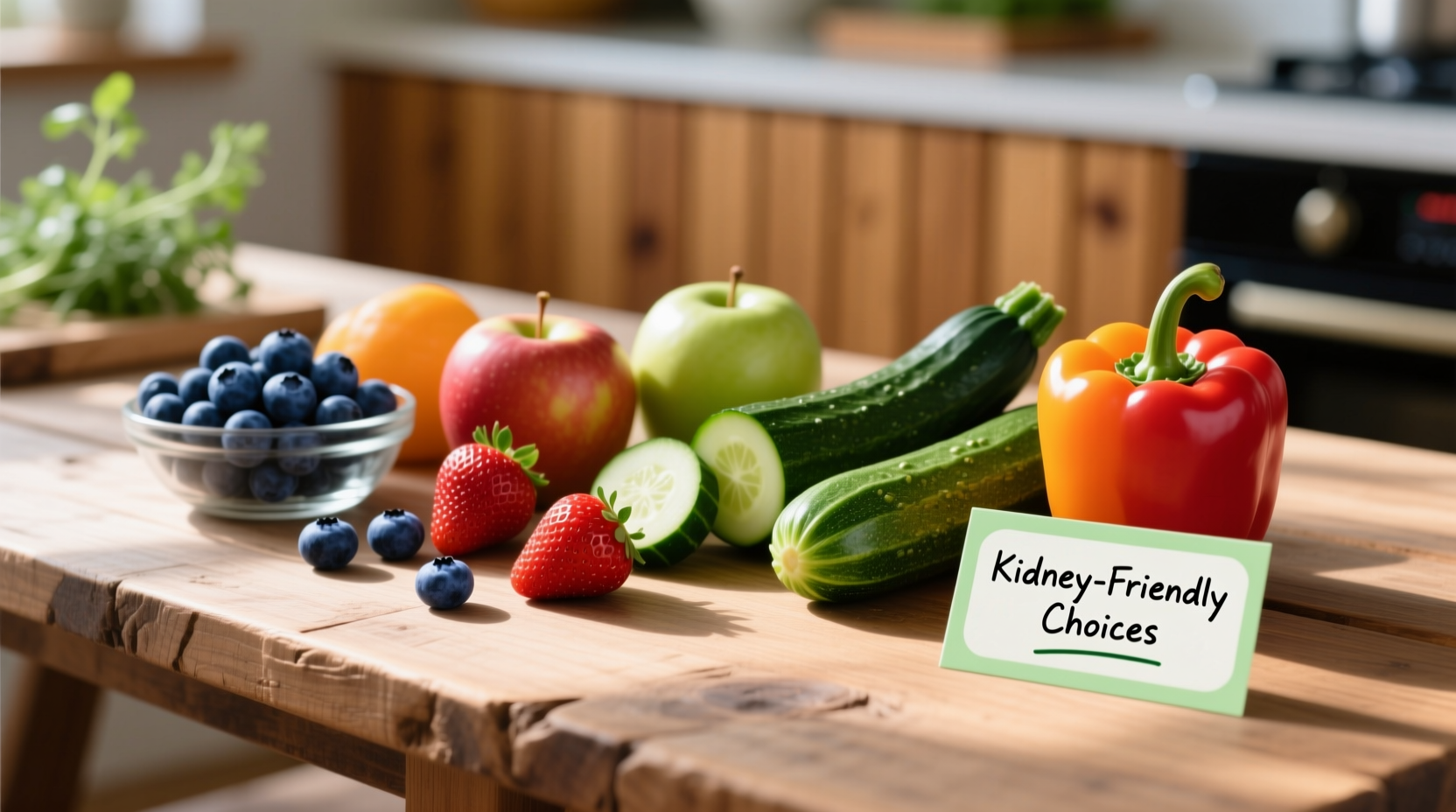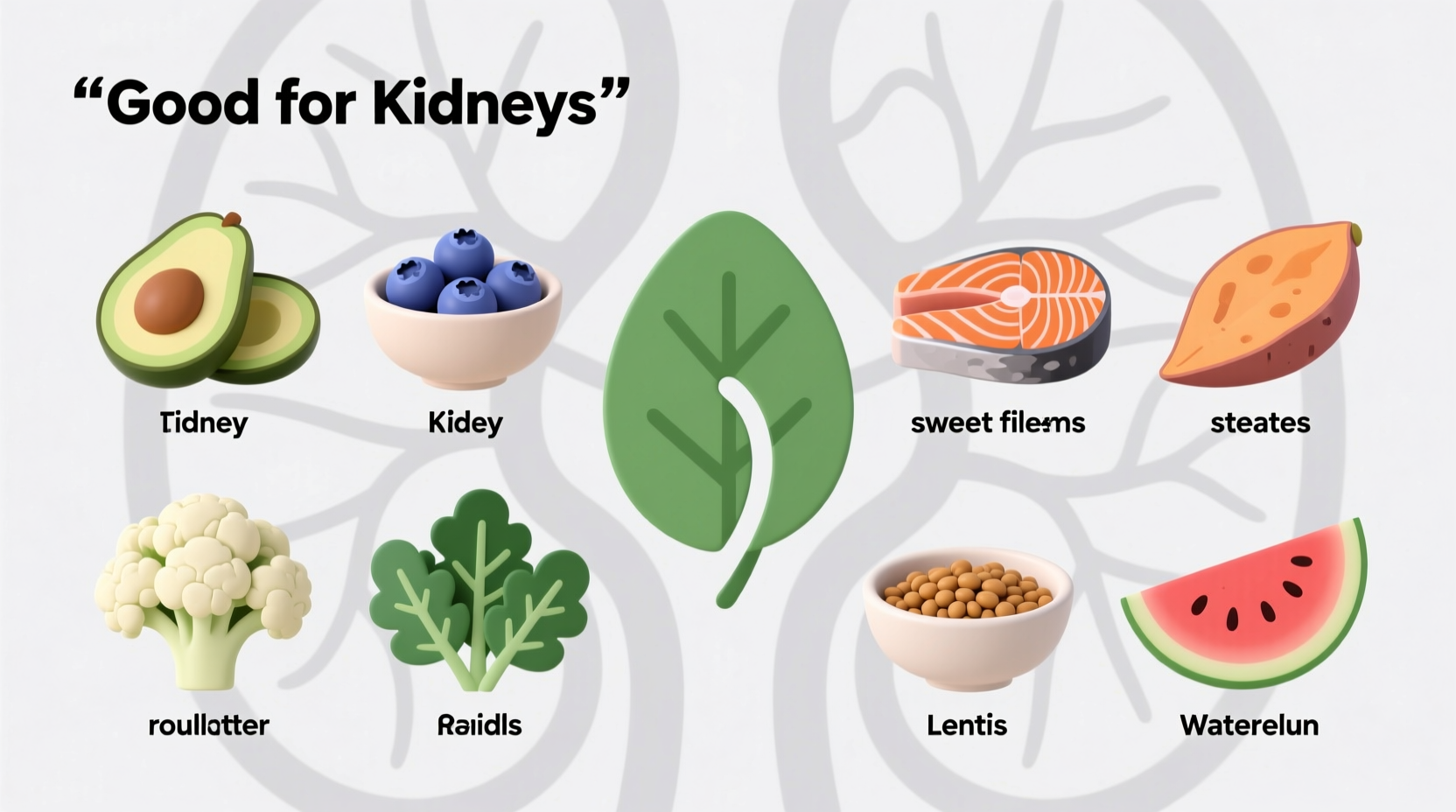Why Kidney Health Matters More Than You Think
Your kidneys filter approximately 150 quarts of blood daily, removing waste and excess fluid while regulating blood pressure and producing red blood cells. According to the National Institute of Diabetes and Digestive and Kidney Diseases, nearly 15% of American adults have chronic kidney disease, often without knowing it. The good news? Research shows that dietary choices significantly impact kidney health both for prevention and management.
Top Kidney-Supporting Foods and Why They Work
Not all "healthy" foods benefit kidney function equally. The following selections provide specific nutrients that reduce inflammation, control blood pressure, and minimize oxidative stress on kidney tissue.
1. Red Bell Peppers (Low-Potassium Powerhouse)
Unlike many fruits and vegetables, red bell peppers deliver substantial vitamin C (152% of daily value per cup) with minimal potassium content (186mg per half cup). This makes them ideal for both kidney prevention and early-stage kidney disease management. The lycopene in red peppers reduces inflammation markers by up to 25% according to a 2019 clinical study.
2. Cauliflower (Kidney-Friendly Cruciferous Vegetable)
Rich in indoles that help neutralize toxins, cauliflower provides 77% of your daily vitamin C needs with only 150mg potassium per cup. Steam rather than boil to preserve maximum nutrients. Try it as a low-potassium substitute for potatoes in dishes.
3. Blueberries (Antioxidant Champions)
These tiny berries contain anthocyanins that protect kidney tissue from oxidative damage. A 2018 study in Nutrients found regular blueberry consumption reduced kidney inflammation markers by 18% in at-risk populations. Enjoy one cup daily for maximum benefit.
| Kidney-Supporting Foods | Key Nutrients | Recommended Serving | Special Benefit |
|---|---|---|---|
| Red Bell Peppers | Vitamin C, Lycopene | 1/2 cup raw | Low potassium, high antioxidant |
| Cauliflower | Vitamin C, Indoles | 1 cup cooked | Detoxification support |
| Blueberries | Anthocyanins, Fiber | 1 cup fresh | Reduces inflammation |
| Fish (Salmon, Mackerel) | Omega-3, Lean Protein | 3-4 oz, 2x/week | Lowers protein waste |
| Egg Whites | Pure Protein | 2-3 whites | Low phosphorus protein |
4. Fatty Fish (Omega-3 Power)
Fatty fish like salmon and mackerel provide high-quality protein with significantly less phosphorus than red meat. The omega-3 fatty acids reduce inflammation in kidney tissue. The National Kidney Foundation recommends 3-4 ounces twice weekly. Bake or grill instead of frying to maximize benefits.
5. Egg Whites (Pure Protein Source)
For those managing kidney disease, egg whites provide essential protein with minimal phosphorus compared to yolks. One study published in the Journal of Renal Nutrition found patients consuming egg white protein had 23% lower levels of urea nitrogen, reducing strain on kidneys.

Context Matters: Tailoring Your Kidney Diet
What works for kidney prevention differs from dietary needs with existing kidney conditions. Understanding these context boundaries prevents potentially harmful dietary choices:
- Prevention Focus: Emphasize antioxidant-rich fruits and vegetables, moderate protein (0.8g/kg body weight), and sodium under 2,300mg daily
- Early-Stage Kidney Disease: Monitor potassium (2,000-3,000mg daily), phosphorus (800-1,000mg), and protein (0.6-0.8g/kg)
- Advanced Kidney Disease: Requires strict potassium restriction (2,000mg), phosphorus control, and specialized protein management under medical supervision
Evolution of Kidney Nutrition Science
Our understanding of kidney-friendly nutrition has evolved significantly:
- 1980s: Focus primarily on protein restriction for all kidney disease stages
- 1990s: Recognition of the importance of antioxidant protection for kidney tissue
- 2000s: Development of stage-specific dietary approaches based on eGFR levels
- 2010s: Emphasis on plant-forward diets with controlled potassium and phosphorus
- 2020s: Personalized nutrition based on individual biomarkers and genetic factors
Practical Implementation: Your Kidney Health Action Plan
Transform knowledge into action with these simple steps:
Weekly Meal Framework
- Breakfast: Blueberry-spinach smoothie with almond milk (low potassium)
- Lunch: Cauliflower rice bowl with grilled chicken and bell peppers
- Dinner: Baked salmon with roasted asparagus and red pepper strips
- Snacks: Apple slices with almond butter, egg white omelet
Grocery Shopping Checklist
- Produce: Red bell peppers, cauliflower, blueberries, cabbage, garlic
- Proteins: Egg whites, salmon fillets, skinless chicken breast
- Pantry: Olive oil, vinegar, low-sodium spices
When to Consult a Healthcare Professional
While these dietary guidelines benefit most people, certain situations require personalized medical advice:
- Diagnosed kidney disease (any stage)
- History of kidney stones
- Diabetes or hypertension
- Recent abnormal kidney function tests
Registered dietitians specializing in renal nutrition can create customized meal plans that balance kidney protection with overall nutritional needs. The Academy of Nutrition and Dietetics maintains a finder tool for locating specialists in your area.











 浙公网安备
33010002000092号
浙公网安备
33010002000092号 浙B2-20120091-4
浙B2-20120091-4